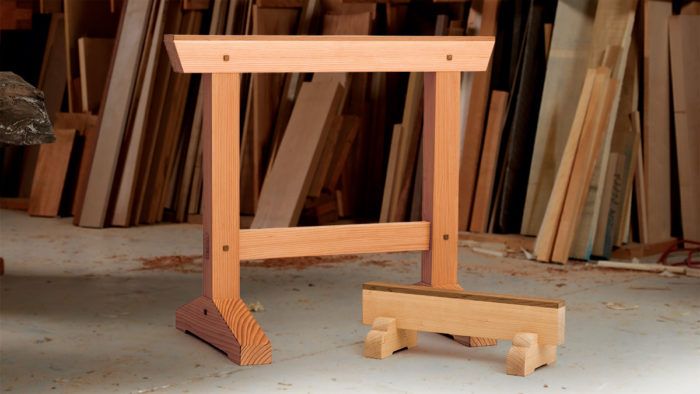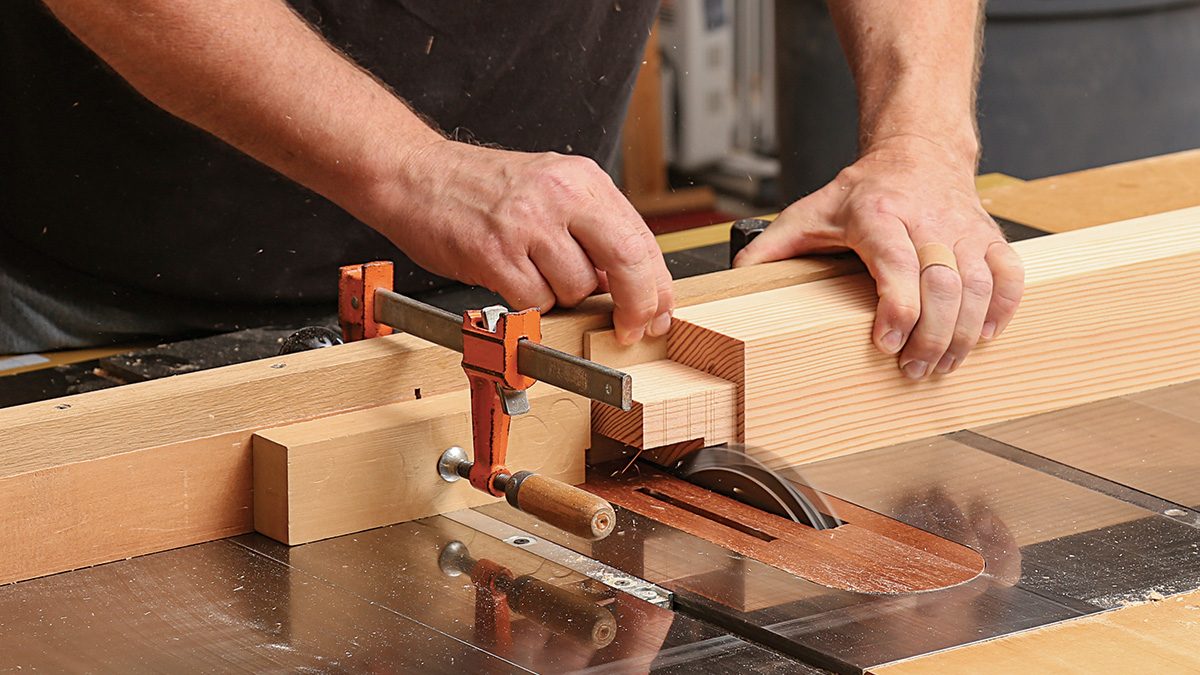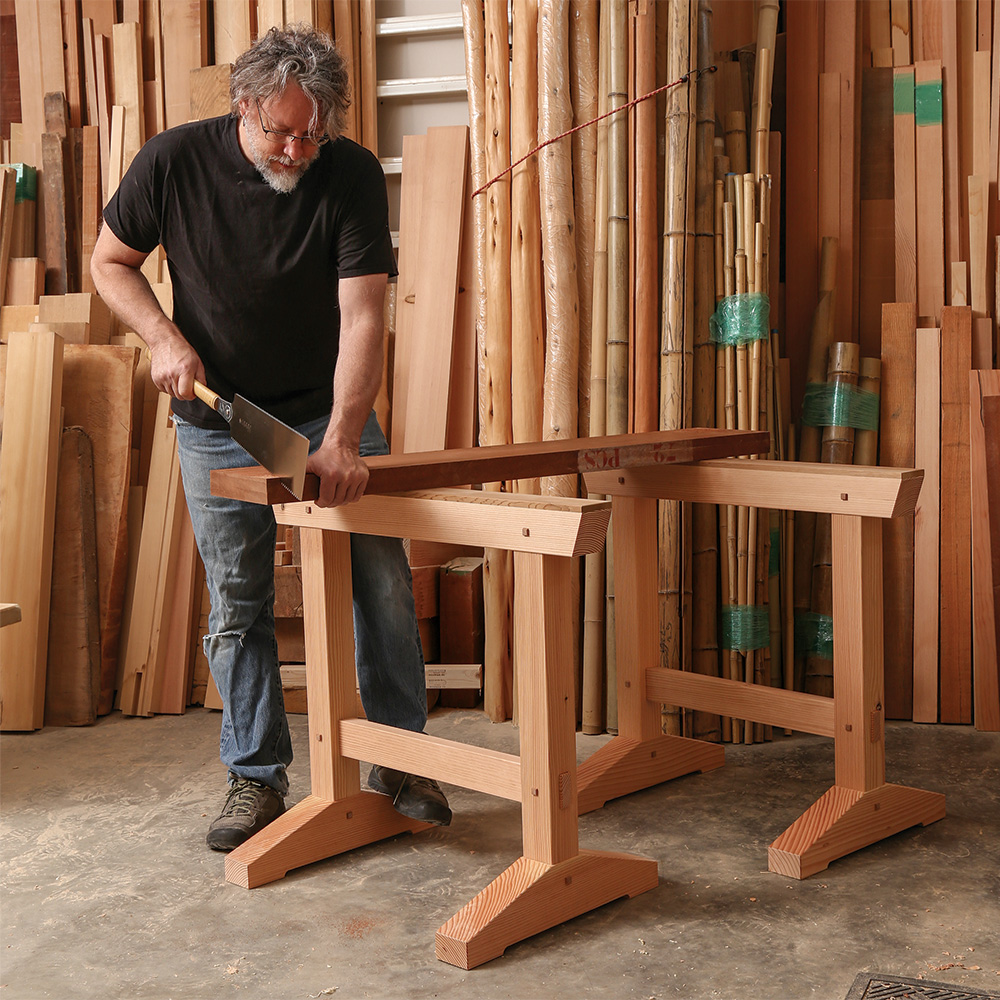Japanese Sawhorses
Sturdy designs in two sizes excel on the floor and on the benchtop.

I can’t remember where I first saw a Japanese planing beam on trestle horses, but I do remember my first thought: “I gotta make a pair of those!” Having grown up around wobbly A-frame sawhorses made from 2x4s and festooned with paint spatters, bent nails, and errant sawkerfs, I thought those trestle horses seemed so sturdy, so clean, so intentional. I make them with drawbored mortise-and-tenons, which add another step to the build but provide extra solidity in joints that will see a lot of stress over the years. Because these heavy-duty horses have myriad uses, referring to them as sawhorses sells them short. I prefer to be more accurate: They are workhorses.
The design of the low horses stems from the fact that most Japanese woodwork is done while sitting. I rarely work on the floor, but I use low horses all the time on the benchtop. They elevate whatever I am working on above the fray of tools and shavings that accumulate on my bench. In the years since I made my first pair, I’ve been recommending them to all of my woodworker friends. I’ll tell them that these are essential, ‘what-did-I-do-before-I-had-these?’ tools; but it isn’t until I make them a pair that they really see what I mean—and often go on to make more themselves.
When I made my first pair of workhorses, I built them with what I had lying around—Douglas fir construction lumber—figuring they would be the test run for a more serious pair made of oak or walnut. But I never looked back. Douglas fir’s strength, weight, and sturdiness (not to mention low cost) made it ideal, and I’ve used it for every pair of full-size horses I’ve made since. But whatever wood you choose, they’ll deliver a lifetime of use. To determine a comfortable work height for your horses, measure from the floor to the bottom of your closed fist. This gives you a good height for sawing, planing, and the like.
The low horses are a design I continually fiddle with. I have five pairs now, and they’re constantly in use. I’ve made them from different woods, in several sizes, always making tweaks to the design in a quest to find the mythical sweet spot. I built this pair with a full-sawn Port Orford cedar 2×4, which gave me a stouter, taller set than the others.

A true workhorse
When I made my first pair of workhorses, I built them with what I had lying around—Douglas fir construction lumber— figuring they would be the test run for a more serious pair made of oak or walnut. But I never looked back. Douglas fir’s strength, weight, and sturdiness (not to mention low cost) made it ideal, and I’ve used it for every pair of full-size horses I’ve made since. But whatever wood you choose, they’ll deliver a lifetime of use. To determine a comfortable work height for your horses, measure from the floor to the bottom of your closed fist. This gives you a good height for sawing, planing, and the like.

From Fine Woodworking #265
To view the entire article, please click the View PDF button below.
Fine Woodworking Recommended Products

WoodRiver Router Bit Storage Case

Woodriver Rechargeable Desiccant Bag








Comments
I had been thinking about building a pair of saw horses but all models I saw were clunky or cumbersome to build. These japanese horses are very nice set of horses. I will build these when summer rolls in. Thanks for the article.
I just finished building a pair of these and they turned out beautiful. I used douglas fir 4x4s for most everything and then simple 2x4s for the cross bars. I don't have a hollow chisel mortiser so instead of square pegs I used oak dowels. I highly recommend building a pair of these.
My first sawhorse builds were copies of James Krenov’s sparse design in one of his early books. They are light, sturdy and store out of the way.
Log in or create an account to post a comment.
Sign up Log in